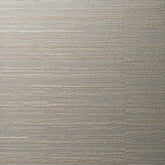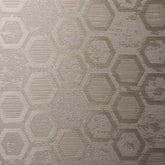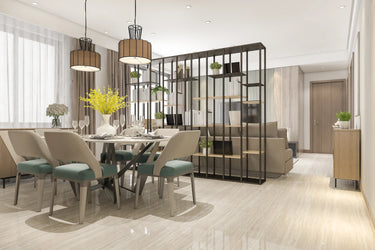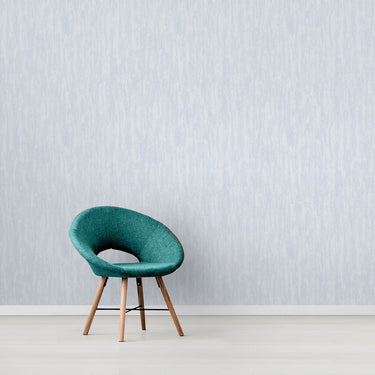Luxury Vinyl Tile is a favorite for both homes and businesses, and for good reasons. It’s rugged, stylish, and low-maintenance. But not all LVT is created equal. The type you choose for your living room isn’t necessarily what you’d want in a busy retail store or office lobby.
This guide will break down the differences between commercial LVT flooring and residential LVT flooring. We are about to break down everything from wear layers and safety rules to style choices and costs. Let’s get into it.
What Is LVT Flooring and Why Is It Popular?
Luxury Vinyl Tiles mimic materials like wood, marble, or ceramic tiles. Behind the scenes, it is a clever mix of multiple layers, including a protective wear layer, a printed design layer, and a waterproof core, delivering the aesthetic appeal of premium flooring.
Why is LVT still stealing the show in 2025?
- The look and feel are downright impressive due to cutting-edge printing, the grain, texture, and colors.
- It handles water and stains. Whether it’s muddy shoes or accidental spills.
- Walking on it feels nice and soft compared to the usual cold, hard ceramic or stone.
- And best of all? It gives you that high-end look with cost effectiveness.
Commercial vs Residential LVT: The Main Differences
At first glance, commercial and residential LVT look like twins, but scratch beneath the surface, and you’ll find they’re built for very different lives.
| Feature | Commercial LVT | Residential LVT |
|---|---|---|
| Traffic Level | Handles heavy, continuous footfall | Built for moderate household use |
| Design Focus | Brand alignment & professional look | Warm, cozy, home-friendly styles |
| Safety Standards | Higher slip resistance & fire ratings | Standard slip resistance |
| Cost | Slightly higher per sq. ft. | More budget-flexible options |
Durability & Wear Layer Thickness: How They Compare
Arguably, the most telling difference between commercial and residential LVT lies in the wear layer, the transparent shield over the decorative layer that absorbs most of the abuse.
Commercial LVT Flooring
Commercial LVT is designed for high-impact. For areas that have heavy traffic, such as hospitals, office buildings, retail stores, and hotels. It has a wear layer of 20–40 mil (1 mil = 1/1000 inch), a thickness greater than that of consumer LVT, which offers:
- Excellent scratch resistance for office chairs, rolling shopping carts, and heavy foot traffic.
- Improved dent resistance to fallen tools, appliances, or machinery.
- Improved stain protection, with ease in maintaining a clean, professional appearance.
Many of the commercial LVT offerings also have urethane or ceramic bead coatings, which add hardness to the surface and reduce maintenance needs.
Residential LVT Flooring
Traffic is less in houses, hence house LVT usually has a 12 to 20 mil wear layer. This is more than sufficient for the usual hustle and bustle of the kitchen, hallway, living room, and bedroom floors. Some advantages include:
- Long-lasting beauty without yellowing or fading from sunlight.
- Good resistance to everyday accidents, like pet claws, toy scratches, or occasional spills.
- Softer feel underfoot, as some thinner wear layers provide a slightly more cushioned surface.
Style & Design Options: Which One Looks Better?
Due to their design flexibility and Natural materials such as stone, oak, and ceramic, LVT is suited for homes and industry, with plenty of choice offered by color, textures, and designs.
Commercial LVT Flooring Styles
Commercial spaces need designs that balance professional aesthetics with durability. Most commercial LVT lines lean toward:
- Corporate and neutral colors, such as greys, beiges, charcoals, and tones, match office furniture.
- Concrete and stone surfaces for a clean and dirt-resistant appearance.
- Geometric motifs or branding, some producers produce LVT with inlay logos, directional arrows, or distinctive color zones to enable wayfinding.
- Glossy finish textures minimize glare and improve slip-resistance.
Residential LVT Flooring Styles
For homes, style, warmth, and personal expression often take priority. Residential LVT ranges are packed with options like:
- Rich wood tones from espresso walnut to honey oak, perfect for adding coziness to living rooms and bedrooms.
- Rustic weathered textures, farmhouse-style whitewashed planks, or hand-scraped oak that give a lived-in charm.
- Trendy patterns, herringbone, chevron, and mixed-width planks that add a designer touch without the price tag of real hardwood.
- Bold statements look like marble effects, encaustic tiles, or colorful designs for creative kitchens and bathrooms.
Residential LVT follows interior design trends, updating seasonally to match home décor.
Slip Resistance & Safety Standards for LVT Flooring
Safety is just as important as style and durability, especially in high-traffic areas. One of the key safety factors is slip resistance, often measured using the Coefficient of Friction (COF). The higher the COF, the less likely someone is to slip, whether the floor is wet or dry.
Commercial LVT Flooring Safety Standards
In commercial environments, slip resistance is a legal and regulatory requirement.
- Higher COF ratings are standard, particularly in places like hospitals, restaurants, schools, and retail stores.
- Comply with ADA (Americans with Disabilities Act) guidelines in the U.S., or similar international safety codes.
- Commercial LVT is frequently tested to ASTM D2047 standards (static coefficient of friction) or EN 13893 in Europe.
- Textured surfaces, embossing, or anti-slip coatings are often added to improve traction without compromising aesthetics.
This ensures the flooring can handle spills, clean water, or tracked-in rain without posing a significant slip hazard.
Residential LVT Flooring Safety Standards
The slip resistance in residential LVT is lower unless marketed explicitly as “slip-resistant” or “non-slip” by the manufacturer.
These options are ideal for:
- Bathrooms and laundry rooms where moisture is common.
- Kitchens with high cooking activity and occasional spills.
- Homes with elderly residents or toddlers who need extra stability underfoot.
Some residential LVT also uses low-gloss finishes or light texture embossing to improve traction while maintaining a natural look.
Cost Comparison: Commercial LVT vs Residential LVT
LVT flooring is known for being more affordable than natural hardwood or stone. Prices vary based on whether you choose commercial-grade or residential-grade products. The cost difference comes down to the thickness of the material, safety certifications, and installation complexity.
Commercial LVT Flooring Costs
As it is engineered to withstand constant foot traffic, heavy loads, and rigorous cleaning cycles, it contributes to the price.
Typical Price Range: $4–$7 per sq. ft. installed
Why It Costs More:
- Thicker wear layers (20–40 mil) for extended durability
- Added safety features like higher slip resistance and ADA compliance
- More complex installation methods (e.g., glue-down for stability in busy spaces)
- Custom patterns or branding options that increase material and labor costs
Over time, the higher upfront investment often pays off through a longer lifespan and lower replacement frequency.
Residential LVT Flooring Costs
Residential-grade LVT is affordable due to its design for moderate household use.
- Typical Price Range: $3–$6 per sq. ft. installed
Cost Drivers:
- A wear layer thickness between 12–20 mil is durable enough for homes
- Easier, faster installation options such as click-lock floating floors
- Greater variety in trending designs and textures without the need for industrial performance
For most homeowners, residential LVT offers the best balance between style, durability, and affordability.
What Affects LVT Flooring Costs?
Whether you choose commercial or residential, final pricing will depend on:
- Brand and product line (premium brands can be 20–30% higher)
- Design complexity (custom prints, herringbone layouts, or mixed patterns cost more)
- Subfloor preparation (uneven subfloors require additional labor)
- Region and labor rates
Installation Methods: Glue-Down vs Click-Lock
Glue-Down LVT
Installed by adhering planks directly to the subfloor with strong flooring adhesive. This creates a permanent, stable floor that won’t shift under heavy traffic or rolling loads. It’s durable and secure, but harder to replace if damaged. Ideal for commercial places.
Click-Lock (Floating) LVT
Features interlocking edges that “click” together, creating a floating floor that sits above the subfloor without glue. It’s faster to install, can often be laid over existing floors, and makes damaged planks easy to replace, making it a favorite for residential spaces. Slightly less stable under extreme loads.
Lifespan & Maintenance Expectations for LVT Flooring
Luxury Vinyl Tile (LVT) flooring gained popularity in both homes and businesses due to its impressive longevity. With proper care, LVT lasts well over a decade, but exactly how long depends on the product grade and how it’s maintained.
Commercial LVT Lifespan
Commercial-grade LVT typically lasts 15–20 years.
Maintaining its durability involves:
- Daily sweeping or vacuuming to remove grit that can wear down the surface.
- Neutral pH mopping to clean without damaging the protective wear layer.
- Promptly addressing spills to prevent staining or moisture damage.
Residential LVT Lifespan
In homes, the demands are lighter, so residential LVT generally lasts 10–15 years.
However, thicker wear layers and premium finishes can extend that lifespan even further. Proper care includes:
- Regular sweeping or vacuuming.
- Occasional damp mopping with a manufacturer-approved cleaner.
- Avoiding harsh chemicals or abrasive pads.
|
Feature |
Commercial LVT |
Residential LVT |
|
Typical Lifespan |
15–20 years |
10–15 years |
|
Wear Layer |
20–40 mil (thicker for high-traffic use) |
12–20 mil (sufficient for household use) |
|
Daily Care |
Sweep/vacuum daily to remove grit |
Sweep/vacuum regularly |
|
Mopping |
Neutral pH cleaner, avoid excess water |
Mild cleaner, avoid harsh chemicals |
|
Best For |
Offices, retail stores, healthcare, hospitality |
Kitchens, living rooms, bedrooms, home offices |
|
Maintenance Tip |
Address spills immediately to prevent staining |
Use doormats to reduce dirt and grit |
Why Maintenance Matters
Assuming reasonable upkeep, commercial LVT can last 15 to 20 years. This longevity relies on regular cleaning, daily sweeping, and neutral pH mopping, which is almost mandatory.
On the residential side, the lifespan drops to 10 to 15 years, though thicker wear layers and attentive care may extend this range.
Interestingly, neglecting even basic maintenance can dramatically shorten these lifespans, as grit and spills erode the wear faster than one might suspect.
Final Verdict: Choosing the Right LVT for Your Space
If your project involves heavy, continuous foot traffic, strict safety requirements, or specialized branding, commercial LVT is the optimal choice despite higher upfront costs. Its thicker wear layers, advanced cores, and certifications ensure longevity and compliance.
For residential spaces, where comfort, style, and moderate use prevail, residential LVT offers excellent value, extensive design options, and simpler installation methods.
Careful consideration of your environment’s demands, maintenance capacity, and aesthetic goals will ensure you select an LVT product that performs and looks great for years.
Frequently Asked Questions
Is LVT waterproof?
Most LVT flooring is highly water-resistant and often waterproof due to its dense core layers made of materials like Wood Plastic Composite (WPC) or Stone Plastic Composite (SPC), making it suitable for bathrooms, kitchens, and laundry rooms.
Do I need an underlayment with residential LVT?
Many LVT products come with attached underlayment. If not, adding one can improve sound insulation and comfort.
How do I maintain and clean LVT flooring?
Routine sweeping or vacuuming, occasional damp mopping with mild cleaners, and prompt spill cleanup keep LVT looking its best without damaging the wear layer.
What specific LVT collections does KAPS Living offer in Dubai?
KAPS Living offers a curated collection of Luxury Vinyl Tile (LVT) flooring in Dubai designed to combine elegance with durability and functionality. Their specific LVT collections include:
- Natural Wood Grain Finishes
- Modern Stone and Marble Textures
- Bold Color and Custom Patterns
Can I get custom color and pattern LVT from KAPS Living?
Yes, KAPS Living in Dubai offers custom colors and patterns. We provide customized designs and colors that can reflect your brand identity or artistic expression. This service is especially suited for upscale retail, hospitality, or creative environments, allowing you to stand out with personalized LVT flooring tailored to your specific aesthetic preferences.








